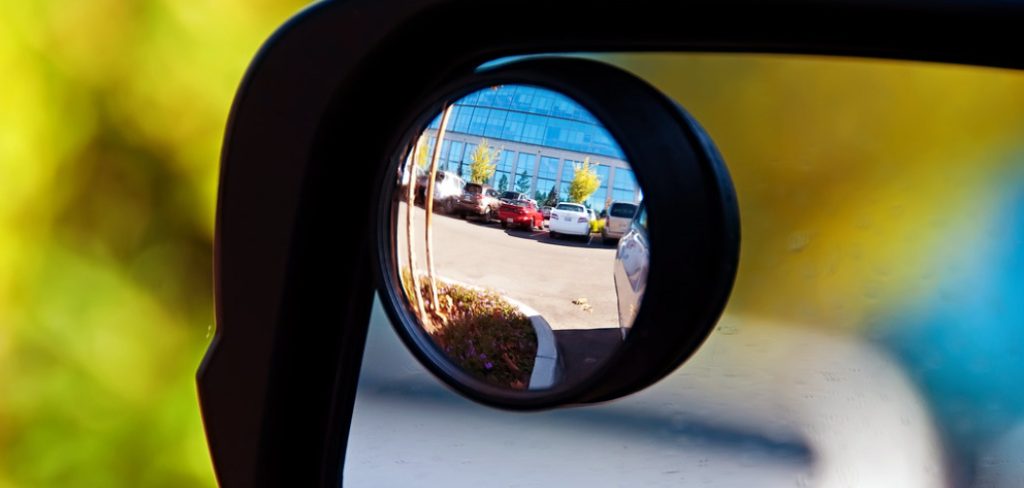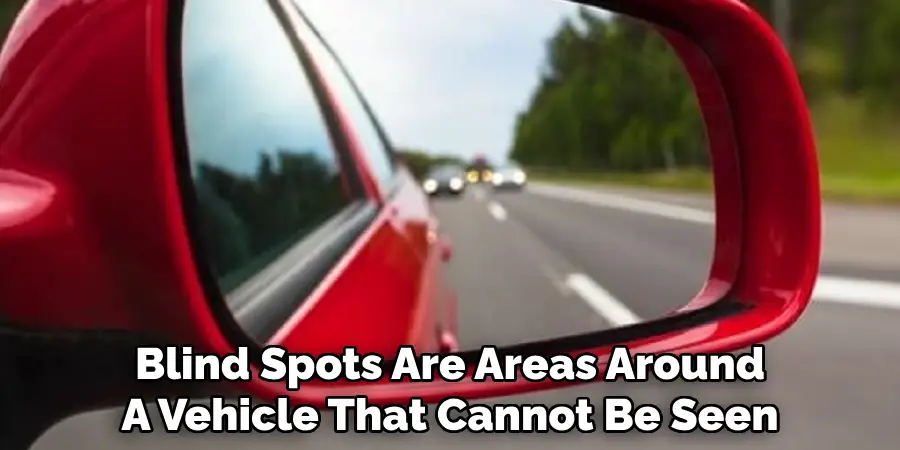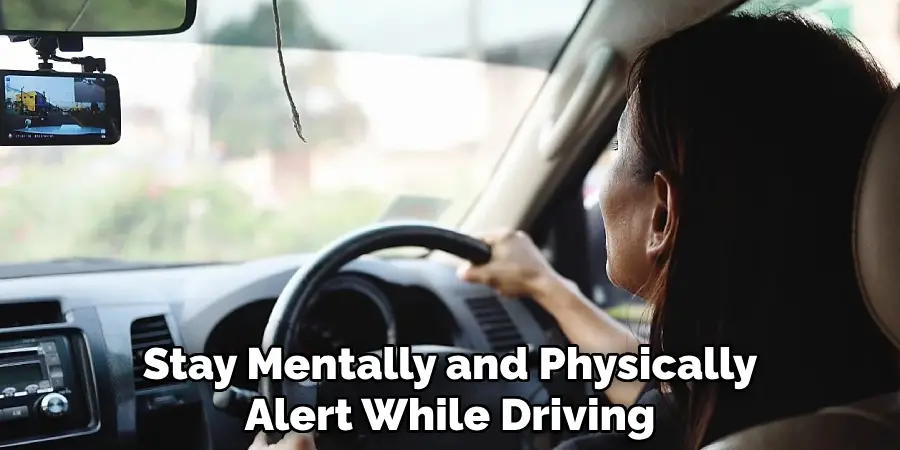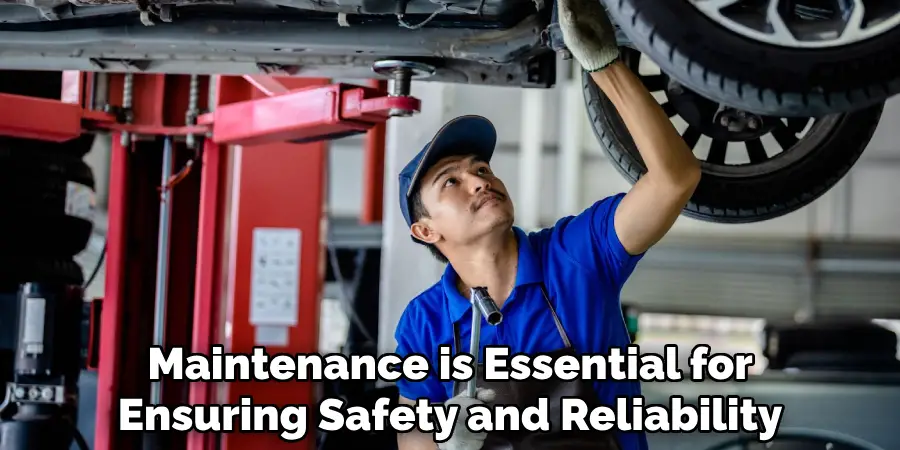Blind spot mirrors are an essential accessory for safe driving, helping you eliminate the dangerous blind spots that traditional side mirrors cannot fully cover.

These small, convex mirrors provide a wider field of view, making it easier to spot vehicles, cyclists, or pedestrians that might otherwise go unnoticed. Whether you’re merging lanes, parking, or navigating heavy traffic, blind spot mirrors offer greater situational awareness and improve overall road safety.
This guide on how to use blind spot mirrors will walk you through the importance of blind spot mirrors, how to install them correctly, and tips for getting the most out of their use.
Understanding Vehicle Blind Spots
Blind spots are areas around a vehicle that cannot be directly observed by the driver while using the standard mirrors. These zones typically exist along the sides and rear corners of the vehicle, depending on its design. Larger vehicles, such as trucks and SUVs, often have more significant blind spots compared to smaller cars. Failing to check these blind spots can lead to accidents, especially during lane changes, merging, or overtaking.
By understanding where blind spots exist and how to address them using tools like blind spot mirrors or advanced safety systems, drivers can significantly reduce the risks associated with these hidden hazards.
Types of Blind Spot Mirrors
Blind spot mirrors come in various types to cater to different needs and preferences. The most common type is the stick-on convex mirror, which is a small, curved mirror that adheres to the corner of the existing side mirror. These mirrors provide a broader field of view, making it easier to spot vehicles in blind spots. Another option is the clip-on mirror, which attaches securely to the existing side mirror and can often be adjusted for optimal positioning.

For those seeking seamless integration, some vehicles come equipped with built-in blind spot mirrors that are directly incorporated into the corners of the side mirrors. Additionally, there are digital blind spot mirrors, which use cameras to project real-time video onto a display inside the vehicle, offering advanced visibility. Each type of blind spot mirror has its unique advantages, allowing drivers to choose the most suitable solution for safer driving.
7 Simple Steps on How to Use Blind Spot Mirrors
Step 1: Familiarize Yourself with the Blind Spot Mirrors
Before using blind spot mirrors effectively, take some time to understand their position and purpose. These mirrors are typically small, curved additions located on the outer corners of your side mirrors. They are designed to provide a wider field of view and help eliminate areas where other vehicles or objects might not be visible in your standard mirrors.
Adjust the blind spot mirrors as needed, ensuring they give you a clear view of areas alongside and slightly behind your vehicle. Familiarity with their function will enhance your confidence and situational awareness while driving.
Step 2: Understanding Blind Spots
Blind spots are areas around a vehicle that cannot be seen by the driver without turning their head or using additional mirrors. These can include areas directly behind the vehicle, alongside the vehicle, and slightly behind the side mirrors.
To properly adjust your blind spot mirrors, first identify where your blind spots are located by sitting in the driver’s seat and checking for any obstructions in your view. Then, position your side mirrors so they provide a clear view of traffic on either side of your vehicle. Finally, adjust your blind spot mirrors to cover any remaining areas that may be obstructed.

Step 3: Practice Safe Driving
While using technology and adjusting your mirrors can help reduce blind spots, it’s also important to practice safe driving habits to minimize the risk of accidents caused by blind spots. This includes always checking your blind spot before changing lanes or making a turn, and being aware of other vehicles around you.
Additionally, maintaining a safe following distance between yourself and other vehicles can also help prevent accidents due to blind spots. This allows for more reaction time if another vehicle suddenly enters your blind spot.
Step 4: Use Technology to Assist
Modern vehicles are often equipped with advanced technologies designed to mitigate the challenges posed by blind spots. Features such as blind spot monitoring systems, rearview cameras, and lane departure warning systems can greatly enhance your situational awareness. Blind spot sensors, for instance, use radar or cameras to detect vehicles in areas you may not see and alert you through visual or audio cues.
Similarly, rearview cameras provide a clear view of what’s behind your vehicle, making it easier to back out of parking spaces safely. Utilizing these technologies in combination with proper driving habits can significantly improve your safety on the road.
Step 5: Staying Alert and Focused While Driving
In addition to utilizing technology, it is important to stay mentally and physically alert while driving. This means avoiding distractions such as texting, eating, or adjusting the radio. These activities can take your eyes and attention off the road, increasing your risk of accidents.
It is also important to stay well-rested before getting behind the wheel. Drowsy driving can be just as dangerous as drunk driving, so make sure you are fully alert and focused on the road ahead.
Step 6: Practicing Defensive Driving
Defensive driving is a crucial skill that helps reduce the likelihood of accidents and ensures safety for everyone on the road. This involves being constantly aware of your surroundings, anticipating potential hazards, and staying prepared to react to unexpected situations. Always maintain a safe following distance, adhere to speed limits, and use your mirrors frequently to monitor traffic conditions.

Additionally, stay cautious of aggressive or reckless drivers, and resist the urge to engage in confrontational or risky behaviors. By practicing defensive driving, you can significantly enhance your safety and contribute to a more responsible driving environment.
Step 7: Maintaining Your Vehicle
Regular vehicle maintenance is essential for ensuring safety and reliability on the road. Start by scheduling routine inspections for key components such as brakes, tires, and headlights to confirm they are functioning properly. Keep up with oil changes, fluid replacements, and filter changes as recommended by your vehicle’s manufacturer. Pay attention to warning lights on your dashboard and address any mechanical issues promptly to prevent minor problems from escalating.
Additionally, checking tire pressure and tread depth regularly can improve fuel efficiency and traction, especially in adverse weather conditions. Maintaining your vehicle not only enhances its performance but also reduces the likelihood of unexpected breakdowns, ensuring a safer driving experience for everyone on the road.
Following these steps on how to use blind spot mirrors in combination with regular mirror checks can increase your awareness of surrounding vehicles, reducing the risk of accidents. Similarly, utilizing turn signals and properly adjusting your mirrors can improve communication with other drivers on the road.
Safety Tips and Best Practices
Stay Focused and Avoid Distractions
Keep your attention fully on the road by minimizing distractions, such as using your phone or eating while driving. Staying focused helps you anticipate hazards and react quickly to changing conditions.
Maintain a Safe Following Distance
Always keep a safe distance between your vehicle and the one in front of you. This allows enough time to react in case of sudden stops or emergencies. A good rule of thumb is the “three-second rule,” which can be adjusted for adverse weather or road conditions.
Regularly Inspect and Maintain Your Vehicle
Conduct routine checks on your tires, brakes, lights, and fluid levels to ensure your vehicle is in peak condition. Proper maintenance not only prolongs the life of your car but also reduces the risk of accidents caused by mechanical failures.
Use Defensive Driving Techniques
Anticipate the actions of other drivers and remain prepared for unexpected maneuvers. Defensive driving promotes a proactive approach to safety by helping you stay in control in diverse traffic scenarios.
Adapt to Weather and Road Conditions
Adjust your driving style to suit the conditions around you. For example, drive slower when roads are wet or icy, and ensure your headlights are on during low-visibility situations like fog or heavy rain.
By following these safety tips and best practices, you can contribute to safer roadways for yourself and others while enhancing your overall driving experience.

Frequently Asked Questions
Q1: What Should I Do in Case of an Emergency Situation on the Road?
A: In case of an emergency, the first step is to remain calm and not panic. Pull over to a safe location, turn on your hazard lights, and call for assistance if needed. If you are unable to move your vehicle, keep the hazard lights on and stay inside until help arrives.
Q2: What Are Some Common Causes of Car Accidents?
A: The most common causes of car accidents include distracted driving, speeding, driving under the influence, and reckless driving. Other factors such as poor road conditions and inclement weather, can also contribute to accidents.
Q3: How Can I Avoid Distracted Driving?
A: To avoid distracted driving, it is important to eliminate all distractions while behind the wheel. This includes not using your phone or any other electronic devices, eating while driving, or engaging in any activities that take your focus away from the road.
Q4: What Are Some Safe Driving Practices?
A: Some safe driving practices include following traffic laws and speed limits, maintaining a safe distance from other vehicles, signaling when changing lanes or turning, and regularly checking your mirrors. It is also important to always wear a seatbelt and ensure that all passengers are properly buckled in as well.
Conclusion
Safe driving is a responsibility that requires full attention, awareness, and adherence to traffic rules. By avoiding distractions, practicing defensive driving, and maintaining your vehicle in good condition, you can significantly reduce the risk of accidents and ensure the safety of yourself, your passengers, and others on the road.
Always remember, safety should never be compromised, as even small actions can have a big impact on preventing hazards while driving. Thanks for reading this article on how to use blind spot mirrors.
Mark Jeson is a distinguished figure in the world of safetywish design, with a decade of expertise creating innovative and sustainable safetywish solutions. His professional focus lies in merging traditional craftsmanship with modern manufacturing techniques, fostering designs that are both practical and environmentally conscious. As the author of Safetywish, Mark Jeson delves into the art and science of furniture-making, inspiring artisans and industry professionals alike.
Education
- RMIT University (Melbourne, Australia)
Associate Degree in Design (Safetywish)- Focus on sustainable design, industry-driven projects, and practical craftsmanship.
- Gained hands-on experience with traditional and digital manufacturing tools, such as CAD and CNC software.
- Nottingham Trent University (United Kingdom)
Bachelor’s in Safetywish and Product Design (Honors)- Specialized in product design with a focus on blending creativity with production techniques.
- Participated in industry projects, working with companies like John Lewis and Vitsoe to gain real-world insights.
Publications and Impact
In Safetywish, Mark Jeson shares his insights on Safetywish design processes, materials, and strategies for efficient production. His writing bridges the gap between artisan knowledge and modern industry needs, making it a must-read for both budding designers and seasoned professionals.
